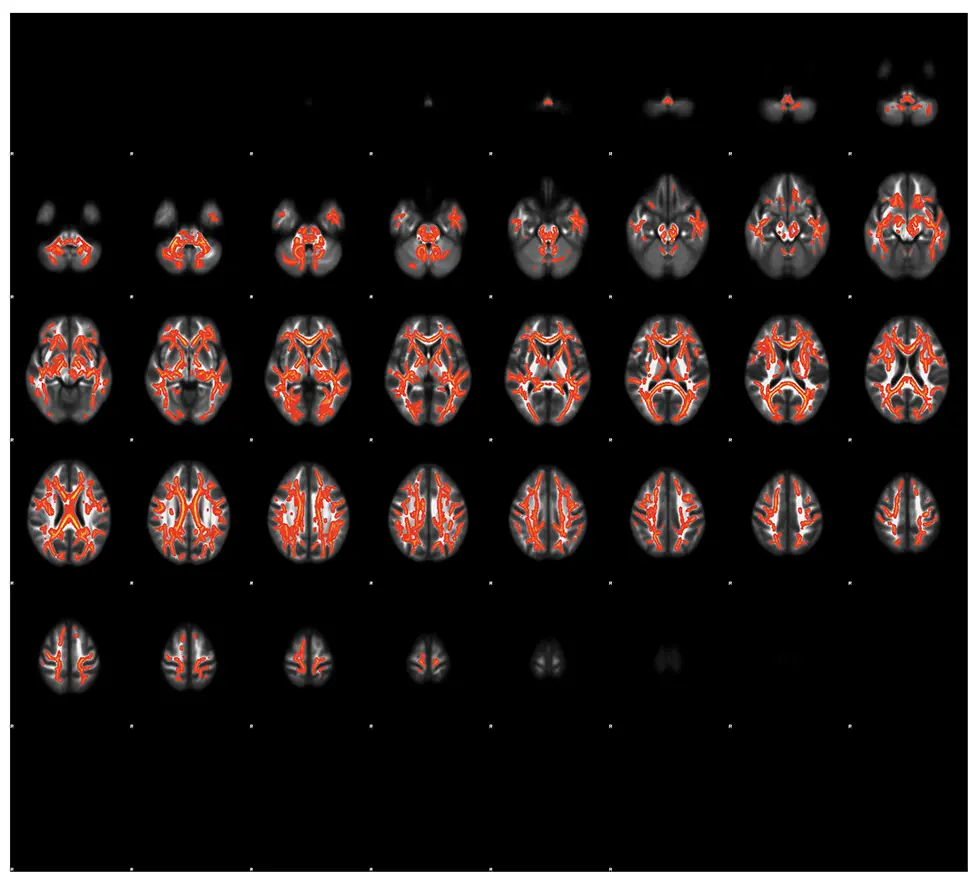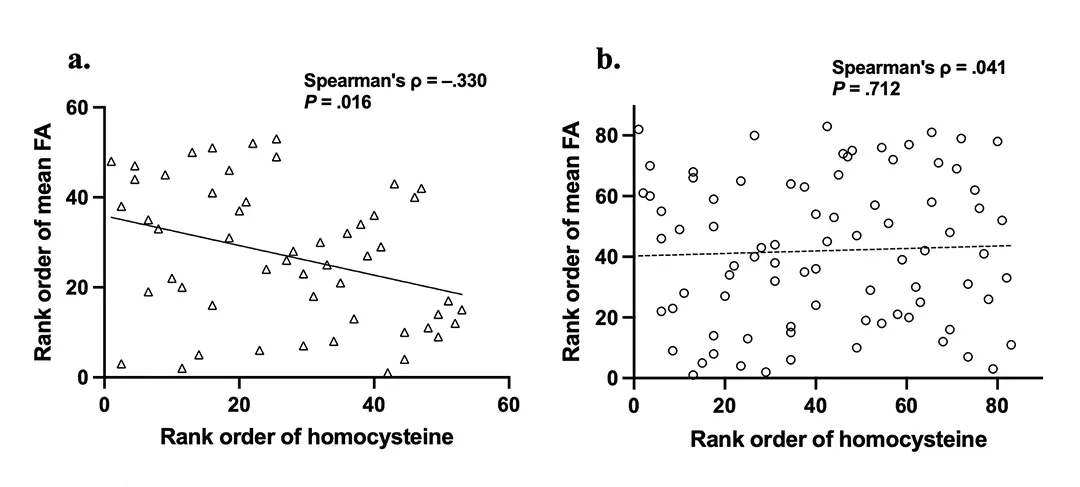
Recently, it has been reported that increased plasma Hcy levels are associated with the risk of developing SZ and its severity. In vivo and in vitro studies have shown that Hcy promotes oxidative stress and inflammation, and damages WM. Additionally, large-scale studies using DTI have reported lower fractional anisotropy (FA), an indicator of WM dysconnectivity, in people with SZ. In this study, we aimed to determine the relationship between plasma Hcy levels and WM microstructural disruption in people with SZ.
People with SZ exhibited widespread FA reduction on skeletonized FA images compared to those in the HC group. These reductions extended into the bilateral deep WM areas in the frontal, temporal, parietal, and occipital lobes, a large part of the corpus callosum, and the corona radiata (Fig. 1).

In the SZ group, there was a significant negative correlation between the plasma Hcy levels and mean FA of the clusters with a significant group difference (mean FA). In contrast, no significant correlation was noted between the plasma Hcy levels and mean FA in the HC group (Fig. 2).

A significant negative correlation between plasma Hcy levels and WM microstructural disruption was noted in the SZ group but not in the HC group. Our results suggest that increased Hcy may be associated with WM dysconnectivity in SZ, and the interaction between Hcy and WM dysconnectivity could be a potential mechanism of the pathophysiology of SZ. Further, longitudinal studies are required to investigate whether high Hcy levels subsequently cause WM microstructural disruption in people with SZ.